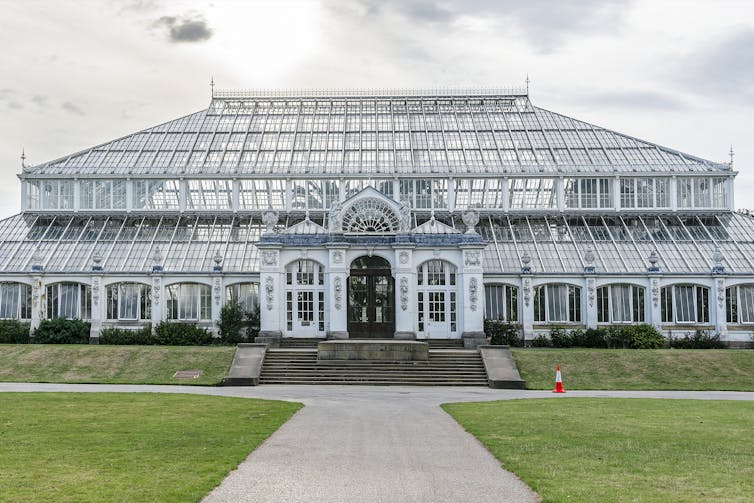Jenny Bulstrode, UCL and Sheray Warmington, UCL
In a speech to mark Unesco’s campaign for the Remembrance of the Slave Trade and its Abolition, UN secretary-general António Guterres told the United Nations general assembly earlier this year that the inequalities created by 400 years of the transatlantic chattel trade persist to this day. “We can draw a straight line from the centuries of colonial exploitation to the social and economic inequalities of today,” he said.
Guterres’ words were echoed by Judge Patrick Robinson of the international court of justice, who has called for the UK to recognise the need to pay reparations for its part in the slave trade, telling The Guardian on August 22 that: “Reparations have been paid for other wrongs and obviously far more quickly, far more speedily than reparations for what I consider the greatest atrocity and crime in the history of mankind: transatlantic chattel slavery.”
Investment into the trafficking of African people in the Caribbean created a lucrative economic system that helped Britain develop into a global economic superpower. The consequences continue to be felt today – not only in vast inequities in the distribution of wealth and resources, but also in the denial and effacement of the people of African descent whose skills and knowledge helped power that industrial and societal transformation.
This year marks the 240th anniversary of arguably one of the biggest thefts in the history of intellectual property. The so-called “Cort process”, patented by the financier Henry Cort between 1783 and 1784, has been called one of the most important innovations of the British industrial revolution. Yet recently published findings show the process was first developed by 76 black metallurgists, many of them enslaved, in an 18th-century foundry in Jamaica.
The foundry was forcibly shut down for presenting too much of a threat to Britain’s economic and political domination. We know some of these black metallurgists’ names: Devonshire, Mingo, Mingo’s son, Friday, Captain Jack, Matt, George, Jemmy, Jackson, Will, Bob, Guy, Kofi and Kwasi.
Stolen heritage
African enslavement may be considered one of the quintessential depictions of global theft and destruction in human history. In 2018, Felwine Sarr and Bénédicte Savoy’s report on the restitution of cultural heritage pointed out that 90% of sub-Saharan Africa’s material cultural heritage is held outside the continent. From the kidnapping of Africans from their homelands, the eradication of native populations, to the forced loss of African culture, history and identity, the damage that chattel enslavement has done continues to permeate development and economic discourse the world over.
But as the global reparations movement gains traction it opens a new discourse about the debt owed for that which was stolen. It also highlights the need to create a robust educational system aimed at highlighting the realities of slavery and colonialism. The history of the black metallurgists is just one example of the contributions of people of African descent to the wealth of European and US societies today.

Kiev.Victor/Shutterstock
For much of recent history, institutions in the global north have dominated the narrative of where and who drives innovation. But history – and history taught in schools – must also recognise and name enslaved Africans as true innovators of their times. In Florida, the governor and Republican presidential hopeful, Ron DeSantis, has introduced new educational standards which teach that some enslaved people benefited from slavery. History must challenge this constant narrative of black bodies merely being machines.
Truth and reparation
In the search for truth and reparation, truth of brutalities inflicted alone is not enough. There must also be truth about the pioneers and innovators of colonised and enslaved societies – such as the 76 black metallurgists – whose ideas changed the trajectory of civilisation and who laid the building blocks for growth, change and development.
The simultaneous theft and denial of black innovation has served a purpose for the global north. The Caricom Reparations Commission, notes that one of the main policies of the European colonisers was that there should be “not a nail to be made in the colonies”. A fundamental part of the global north’s accumulation has been to create captive markets and maintain those markets post-independence. Colonies and post-independence states alike have been actively deprived of the developmental apparatus to create a thriving society.
Resource extraction during this period was not merely centred on sugar, tobacco and cotton. It also drew on intellect and innovation which was stolen from the colonies and used to help build the prosperous nations of the global north.
Reparation is not only about money. It is also about recognition. Alongside the names of freedom fighters such as Sam Sharpe and Queen Nanny, children must learn the names of black innovators. Part of truth and reconciliation must be this re-centring of black identity as part of a decolonised education system across former colonial and colonising states.
It must be a curriculum which includes the names and identities of enslaved African people whose skill and knowledge both challenged and transformed the global industrial and economic system. Through this, descendants will gain an understanding of the importance of their own history and ancestral cultures and all it contributed.
Recognition of the theft of black intellectual property provides a starting point for quantifying the harms that were done and continue to resonate to this day. This is necessary for any process of truth and reconciliation.
Quantification and monetary reparation, while necessary, are not in themselves enough. They must be combined with institutional recognition through an education system that acknowledges the role of enslaved African people in both challenging and driving forward the economies, scientific innovations and cultures of European enslavers.![]()
Jenny Bulstrode, Lecturer in History of Science and Technology, UCL and Sheray Warmington, Honorary Research Associate, UCL
This article is republished from The Conversation under a Creative Commons license. Read the original article.

